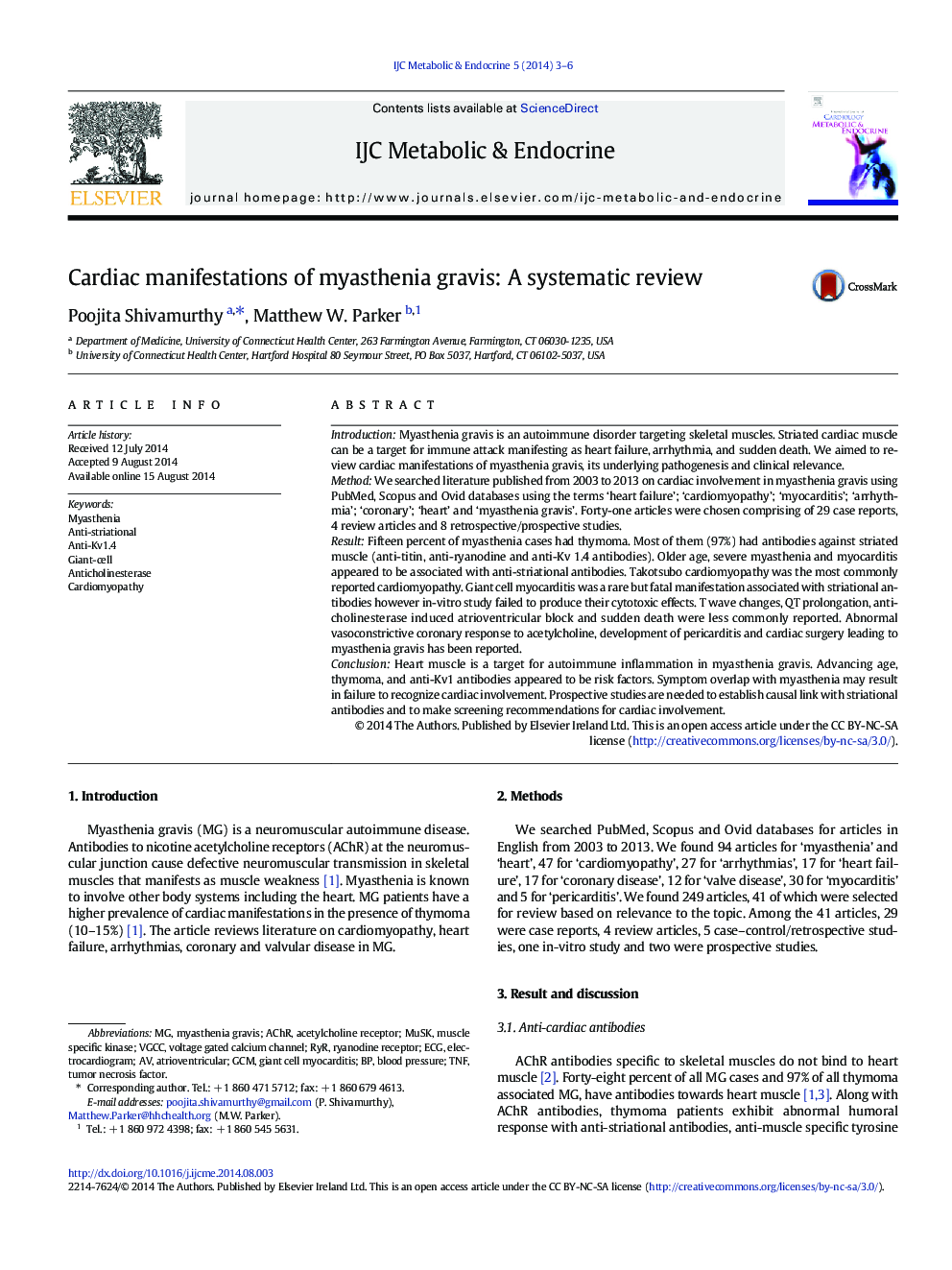| Article ID | Journal | Published Year | Pages | File Type |
|---|---|---|---|---|
| 2927259 | IJC Metabolic & Endocrine | 2014 | 4 Pages |
•Anti-striational antibodies were found in 97% of myasthenia cases with thymoma.•Takotsubo cardiomyopathy has been associated with myasthenia crisis.•Majority of giant cell myocarditis cases had anti-Kv 1.4 antibodies.•QT prolongation and pyridostigmine induced atrioventricular blocks have occurred.•Increased age, severe myasthenia, and anti-striational antibodies are risk factors.
IntroductionMyasthenia gravis is an autoimmune disorder targeting skeletal muscles. Striated cardiac muscle can be a target for immune attack manifesting as heart failure, arrhythmia, and sudden death. We aimed to review cardiac manifestations of myasthenia gravis, its underlying pathogenesis and clinical relevance.MethodWe searched literature published from 2003 to 2013 on cardiac involvement in myasthenia gravis using PubMed, Scopus and Ovid databases using the terms ‘heart failure’; ‘cardiomyopathy’; ‘myocarditis’; ‘arrhythmia’; ‘coronary’; ‘heart’ and ‘myasthenia gravis’. Forty-one articles were chosen comprising of 29 case reports, 4 review articles and 8 retrospective/prospective studies.ResultFifteen percent of myasthenia cases had thymoma. Most of them (97%) had antibodies against striated muscle (anti-titin, anti-ryanodine and anti-Kv 1.4 antibodies). Older age, severe myasthenia and myocarditis appeared to be associated with anti-striational antibodies. Takotsubo cardiomyopathy was the most commonly reported cardiomyopathy. Giant cell myocarditis was a rare but fatal manifestation associated with striational antibodies however in-vitro study failed to produce their cytotoxic effects. T wave changes, QT prolongation, anticholinesterase induced atrioventricular block and sudden death were less commonly reported. Abnormal vasoconstrictive coronary response to acetylcholine, development of pericarditis and cardiac surgery leading to myasthenia gravis has been reported.ConclusionHeart muscle is a target for autoimmune inflammation in myasthenia gravis. Advancing age, thymoma, and anti-Kv1 antibodies appeared to be risk factors. Symptom overlap with myasthenia may result in failure to recognize cardiac involvement. Prospective studies are needed to establish causal link with striational antibodies and to make screening recommendations for cardiac involvement.
